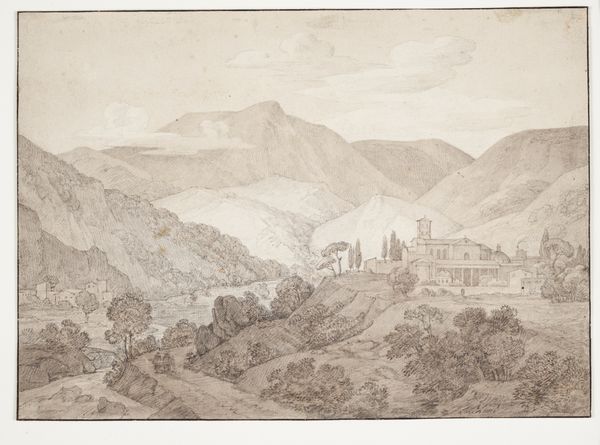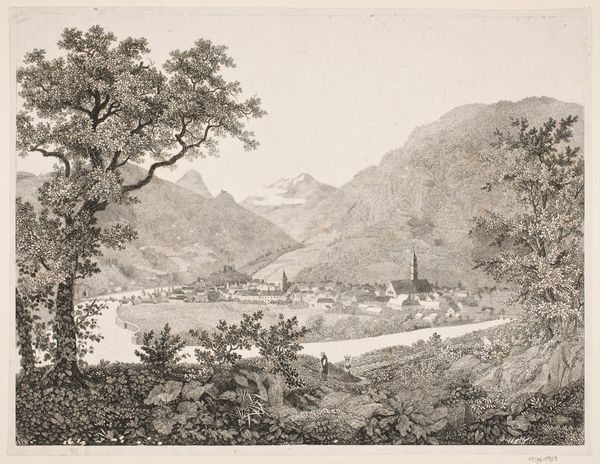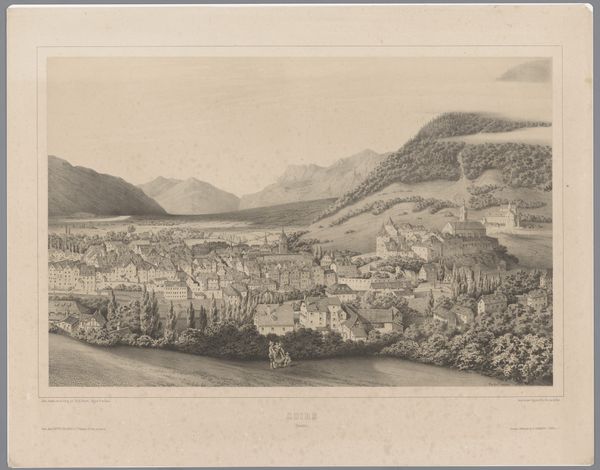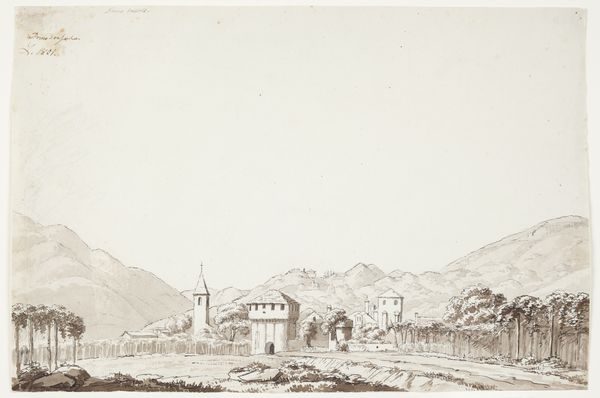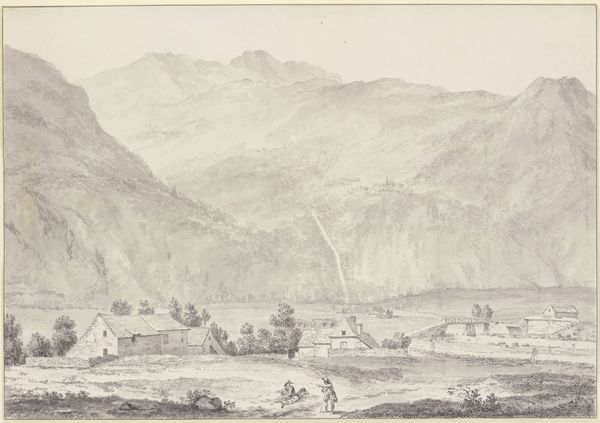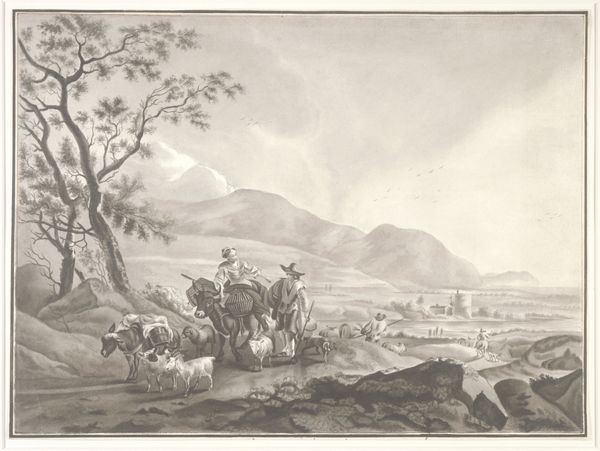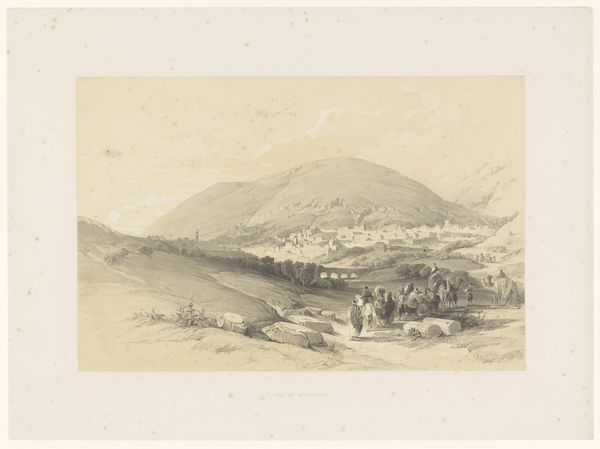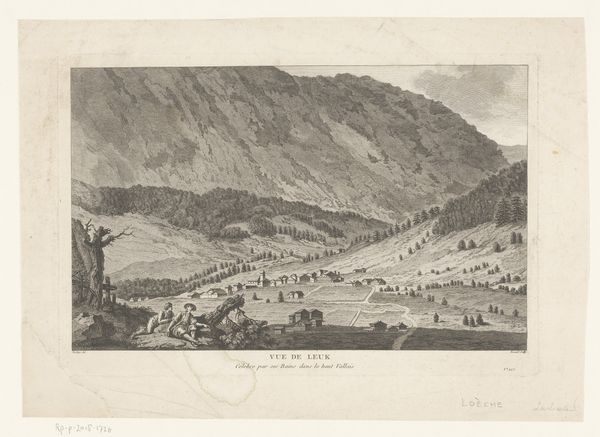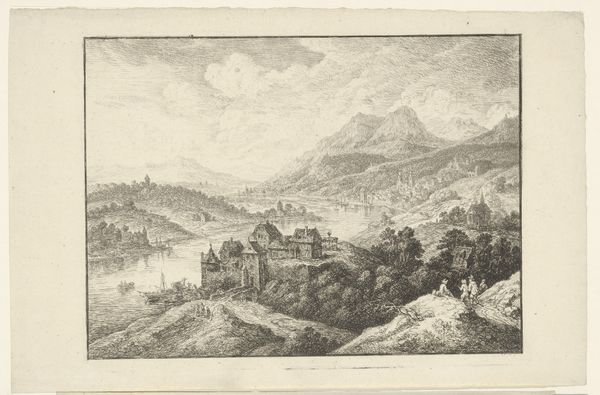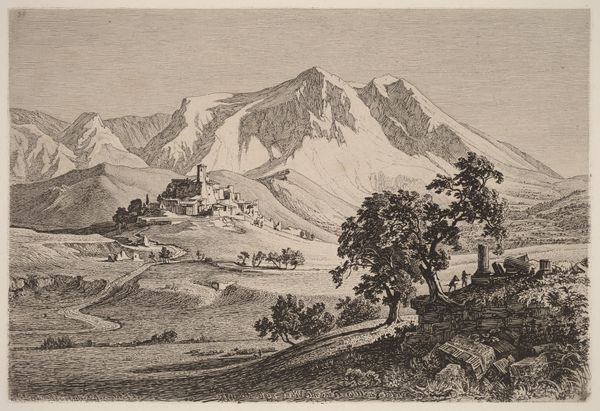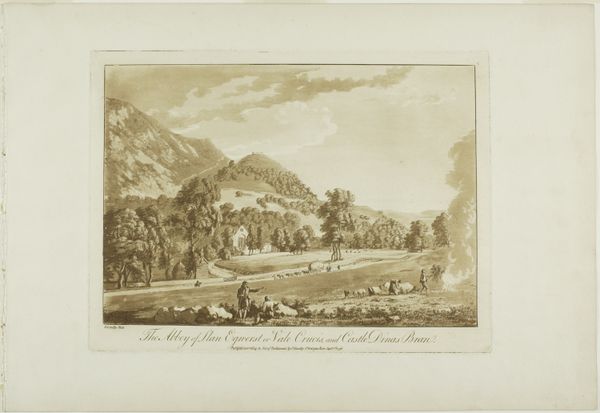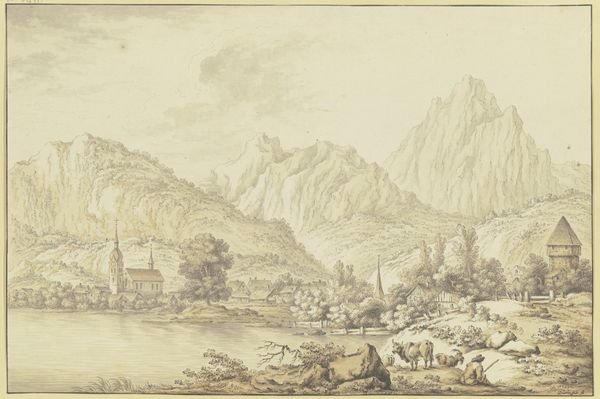
drawing, ink
#
drawing
#
landscape
#
charcoal drawing
#
ink
#
romanticism
Dimensions: 250 mm (height) x 40.1 mm (width) (bladmaal)
Curator: This is "Landsbyen Airolo i Alperne," or "The Village of Airolo in the Alps," created in 1801 by J.L. Lund. It’s a drawing that combines ink and charcoal, currently held here at the SMK, the National Gallery of Denmark. Editor: It feels so hushed. Like the world is holding its breath. I’m immediately drawn to that steeple piercing the sky—almost a needlepoint on the vastness of the mountains. What's your take on its stillness? Curator: The steeple absolutely anchors the village. Its presence emphasizes a kind of stability in the face of that overwhelming landscape. It also indicates continuity—a symbol of both the community and its relationship to something timeless, a sense of the eternal amidst the ephemeral. You see it in Romantic landscapes, how they use these landmarks, churches especially, to represent permanence. Editor: "Ephemeral" is the perfect word! That monochromatic palette just adds to that dreamy feel, right? It almost makes it look like an illustration from a beloved old fairytale. The lack of vibrant colors gives it a certain… otherworldliness. Or maybe it’s more like looking back at a cherished memory—deliberately faded. Curator: The limited palette directs the viewer's focus. It highlights the texture of the drawing—you see the charcoal, the individual strokes of ink… They become prominent. The effect is almost… haptic, don’t you think? And there’s something very interesting about how Lund positions the village itself, nestled but not quite overwhelmed by the natural landscape. Editor: I also think the small scale contributes so much! These small human structures against nature. Makes us confront the raw beauty and untamed force of the mountains versus a need for simple and safe civilization in the valley. Like the village is in this protective shell within nature. So delicate, I wonder how many years that protective haven has been there. Curator: Precisely. That balance—or rather, the perceived imbalance—speaks volumes about the Romantic sensibility. The awe of nature, sure, but also an assertion of human presence, however fragile. And don't forget, landscape painting, drawing really, was taking on more and more significance during this era. Editor: Makes you want to wander in, breathe the crisp air and find a local watering hole to sit in while drawing in your journal, soaking in all the natural beauty. What else is so significant from the period and how this reflects the area's impact on J.L. Lund and his art? Curator: What strikes me about Airolo and the area around it, which would’ve been more well-known back then as a main route through the Alps, is not its visual impressiveness but that it can remind viewers of its history and their relation to time. To be lost in that beauty with its sense of continuity must've made the perfect subject for him at that moment. Editor: To timelessness and perspective, cheers. Curator: Indeed, a captivating look into both time and art.
Comments
No comments
Be the first to comment and join the conversation on the ultimate creative platform.
